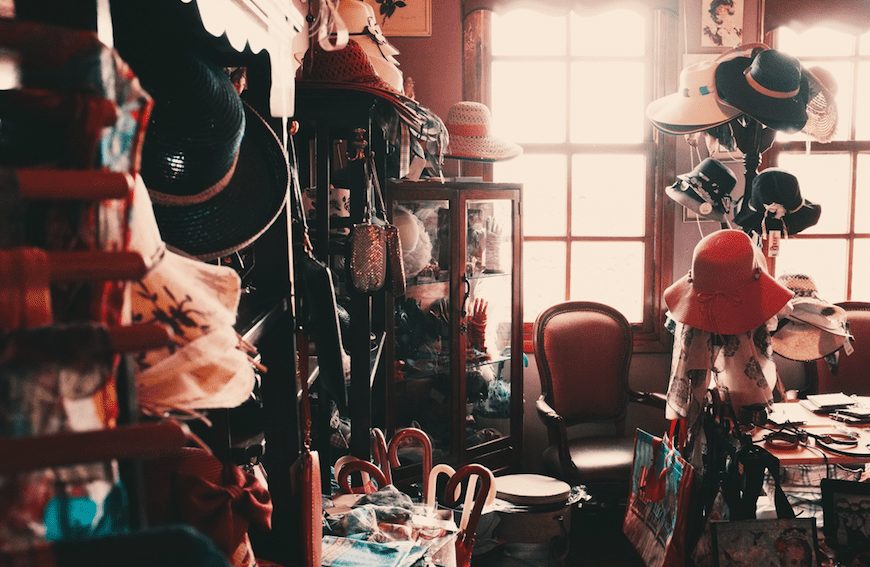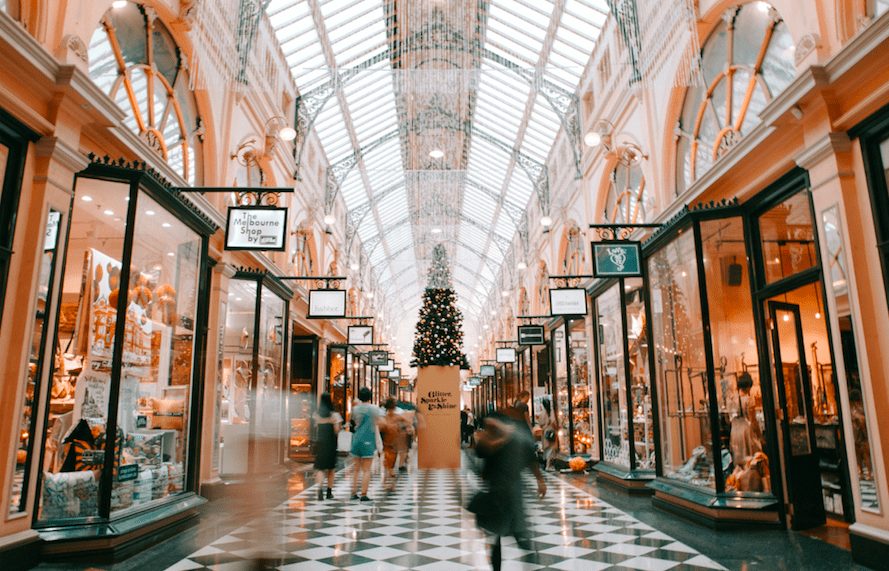The day after Thanksgiving marks the turning of a season ––sunlight becomes scarce, trees across the state are draped with lights, and people across the country begin buying gifts for the holiday season. As early as first of November, we are bombarded with commercials depicting perfect holiday scenes, made all the better with exclusive merchandise. And what the Hallmark Channel likes to depict as a time of heartwarming experiences with loved ones realistically becomes a hectic sprint to the end of the year, juggling work with social commitments and travel plans.
So what happens to our long lists of gifts we need to purchase for office yankee swaps, family gatherings, and potluck dinners with friends? Most of us tend to hurriedly buy whatever we can find from large online retailers at the last possible minute, crossing our fingers they will arrive in time. (We’ve all been there; even our Executive Director, Michael Green, has been guilty of it!) While this method is ultimately effective, it also inadvertently adds to the carbon footprint of your gift.
The carbon footprint of a product is encompassed by a number of factors. When we think about a product’s emissions, we must look at its whole lifecycle–– what materials is it made from, what energy and resources go into its development, and what materials are left behind once it’s no longer used by the consumer? By examining the entire lifecycle of a product, we can determine the overall impact it will have on the environment. Using recycled or reused materials during the production phase or making products that are more easily recycled themselves can extend a product’s lifespan. How long the product is used, and whether it can be repurposed or recycled when it’s disposed of, also factor into its lifecycle impact.
Of course, the exact lifecycle analysis of a gift isn’t at your fingertips when making a purchase, but you can still be intentional about the factors informing your final decision. Where is your gift coming from and how might it have been manufactured? Is the product new or second-hand? How often and for how long will your gift be used? Better yet, is your gift a product at all, or is it an experience?
This year, American consumers are projected to spend between $678.75 billion to $682 billion on presents, an almost 4% increase from last year. But how can we spend more responsibly? Below is a list of factors you can consider to purchase less carbon-intensive presents this holiday season.
Can you buy local?

One way you can reduce the transportation emissions associated with your gifts is by shopping at local small businesses. Oftentimes, you can find holiday markets that feature local artists and entrepreneurs. In Boston, we have the SOWA Holiday Market and others throughout the month of December. Rather than buying a product from a large online retailer, look into whether you can find that product from a local store or artist. Not only are you reducing the emissions generated from transporting your item to your home, but you are also supporting your local economy and business community. You can’t guarantee that all the products you find on local shelves haven’t traveled a long way to land in your community, but you can strike up a conversation with the store’s owner to find out more about where their goods are from and factor that information into your purchasing decision.
Can you buy a refurbished or second-hand product?

The clothing industry alone is projected to account for a quarter of the globe’s carbon emissions by 2050. With the rise of fast fashion, garment production has increased to satisfy consumer demand and the quality of clothing has diminished to keep prices low. This increased production and diminished longevity of garments has resulted in a snowball effect for the fashion industry’s carbon footprint. So, how can we decrease the impact of our spending decisions?
One way is to reuse or donate items you no longer have the use for and to purchase items that you need second hand. This concept is exemplified by a term called the circular economy, a business practice we examined last month during our latest LEMR series event. The circular economy is a holistic approach to thinking about the metabolism of product creation, the supply chains that feed product development, and the methods by which “waste” is reutilized. We can increase the lifespan of a product by prolonging the time it’s utilized. So, when you’re looking for a gift –– whether it’s a book, a piece of clothing, or even furniture –– think about whether you can find that product from a local thrift store or online community marketplace for your town or city. By reusing or repurposing a product that has already been made, you are increasing the lifespan of something already in existence rather than creating demand for products that have not yet been made.
Can you buy products with a practical use?

But what if you can’t find the product you’re looking for at a second hand shop? Another way to consider the lifecycle impact of your gifts is to think about how long they will be utilized. Buying a practical gift for a loved one will ensure it’s used enough to justify the emissions generated by its production and eventual disposal. I’m not suggesting we all adopt Marie Kondo’s lifestyle of minimal clutter, but finding a useful gift for someone shows you’ve put thought into what will add value to their everyday life. Think about what your loved ones really need –– whether it’s a crockpot, textbooks, socks, or snow boots –– and pick a gift that shows how much you care about them. A practical gift will be appreciated long after it’s given.
Can you buy an experience?

This is my favorite gift idea to employ. Think about the person you’re purchasing a gift for –– what are they passionate or curious about? What have they mentioned wanting to explore or learn about? Now think about how you can help make that experience happen for them. You can enroll them in a class about cooking, coding, or anything in between. Boston has multiple schools, restaurants, and museums that offer adult classes on evenings and weekends. You can also plan a weekend for the two of you to achieve one of their goals together, like climbing a mountain or learning photography. Experiences carry a longer lifespan in people’s’ minds and in a lot of cases, they carry a lower carbon footprint than a product that is rarely used and relegated to the back of a closet.
Ultimately, gifts are meant to show how much you care for the people around you. By thinking about what you’re buying and where you’re buying it, you can come up with a more sustainable and thoughtful presents this holiday season. Our lives may not be Hallmark movies, but we can still use this time of year to show our loved ones how much we care.
Can you support a cause you care about?

The holiday season is a great time to give, and support causes you care about. As we celebrate with family, friends, and lots of gifts, it is also important to remember that we can do some good along the way! Donating to organizations with missions that resonate with you, or donating on behalf of a loved one can be a great gift for the climate-conscious. In our case, you can support climate action and help us continue fighting climate change, while at the same time getting a chance to be rewarded in the best way!
We are carrying out a fundraising raffle, with all profits going towards carbon pricing efforts, and since the raffle is taking place on New Year’s Day, tickets make for a great gift this holiday season. You can give your loved ones a carbon-free gift and a chance at winning big! This is perfect for both car enthusiasts, and environmentalists – and is also a great way to show your employees some appreciation during the holidays. Buy raffle tickets here.









